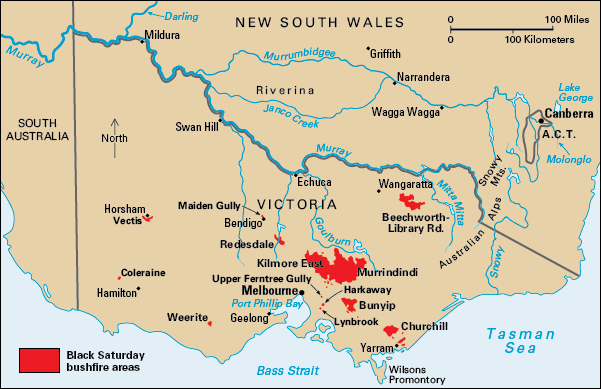Black Saturday bushfires were the deadliest wildfires in Australian history. They began in southeastern Victoria in February 2009. Flames spread rapidly across land and through towns, killing and injuring many people.

An intense drought, record-high temperatures, and strong winds contributed to extremely dangerous conditions, stoking hundreds of bushfires. The burning was most severe on Saturday, February 7, which became known as Black Saturday. Most of the fires caused little damage, but several grew rapidly, burning 1.1 million acres (450,000 hectares) of land. Almost 400 fires burned individually by the end of the day. On February 8, two separate fires joined to form the Kinglake Fire Complex. The Kinglake complex was among the most serious of the fires, burning paths through forests and national parks. Its flames reached nearly 100 feet (30 meters) in height.
The fires destroyed entire towns, killing 173 people and injuring 414. The Kinglake fires caused 120 of the deaths. More than 1 million animals, both wild and domestic, fell victim to the fires. Thousands of homes and buildings were destroyed. Officials determined that some of the fires were caused by faulty electrical equipment, including fallen power lines. Other fires were found to have been set deliberately. The hot and dry conditions made fighting the fires difficult, and they continued to blaze for weeks. The final flames were put out on March 14, 2009.
Following the Black Saturday bushfires, officials worked to improve bushfire-fighting strategy, fire safety, and fire education in Victoria. They modified building codes and banned the building of homes in high-risk areas.
